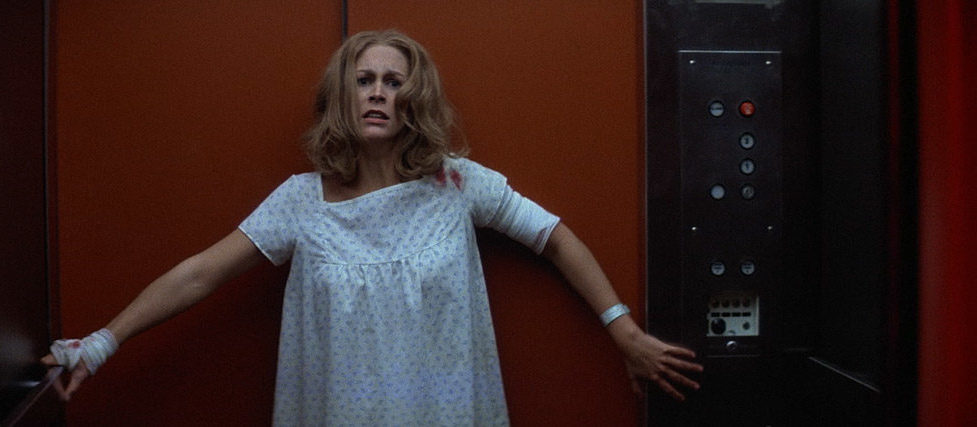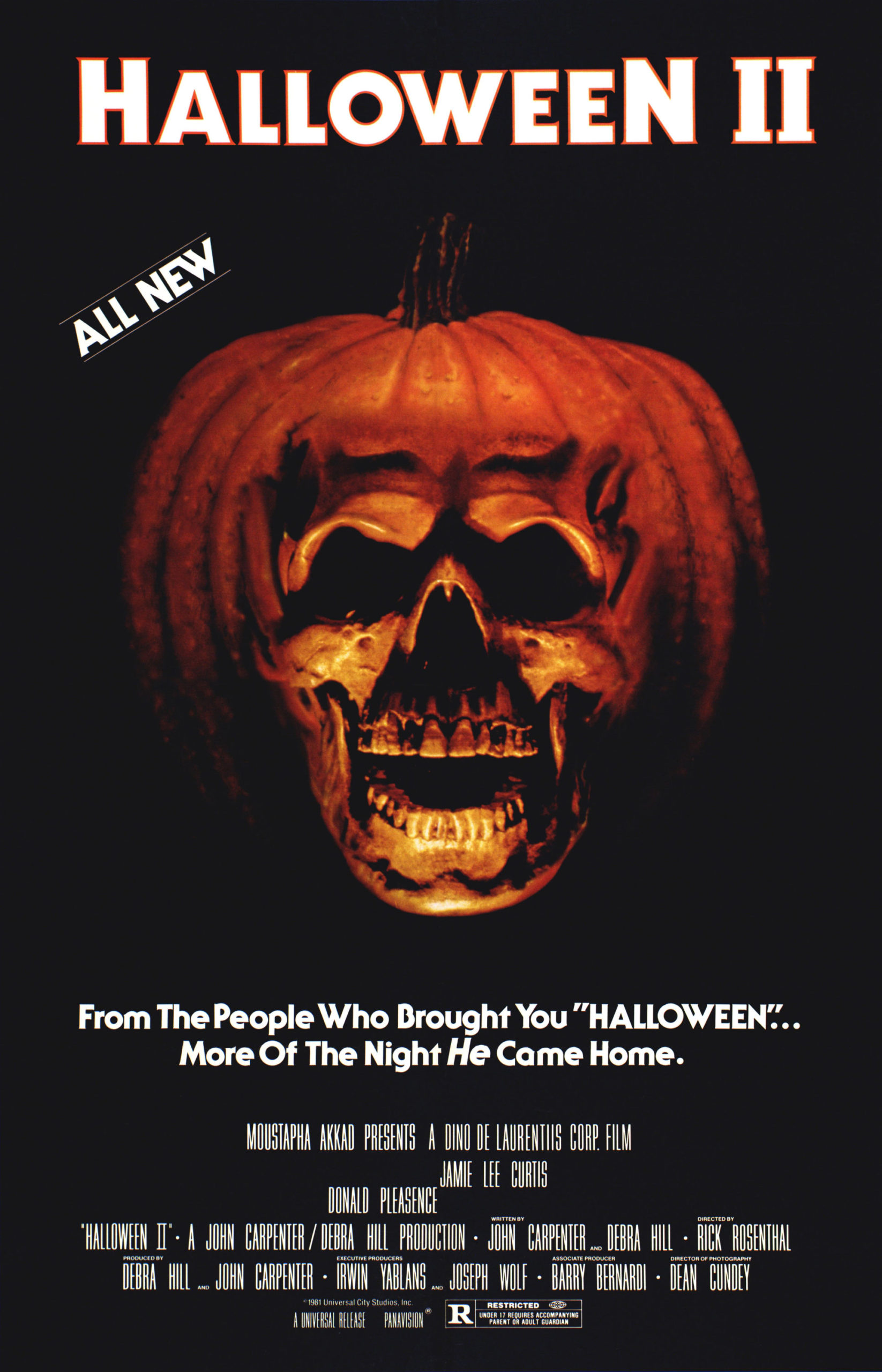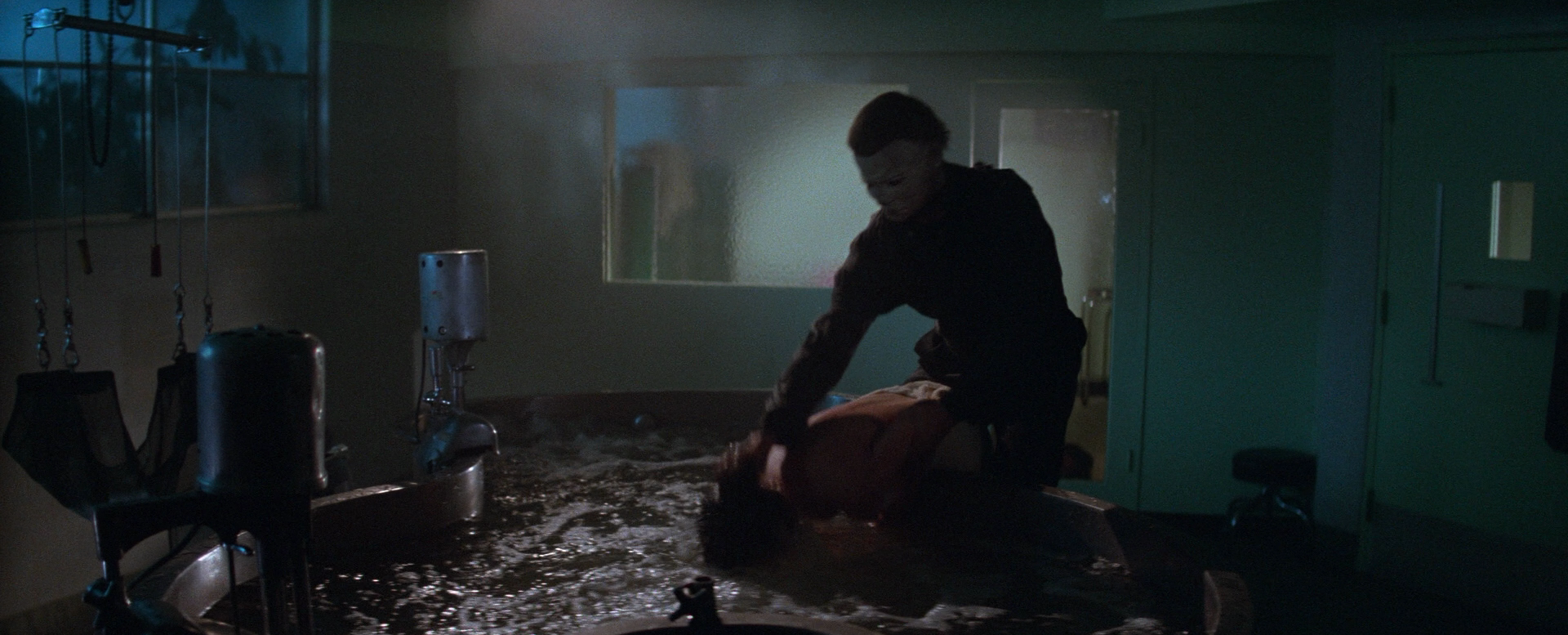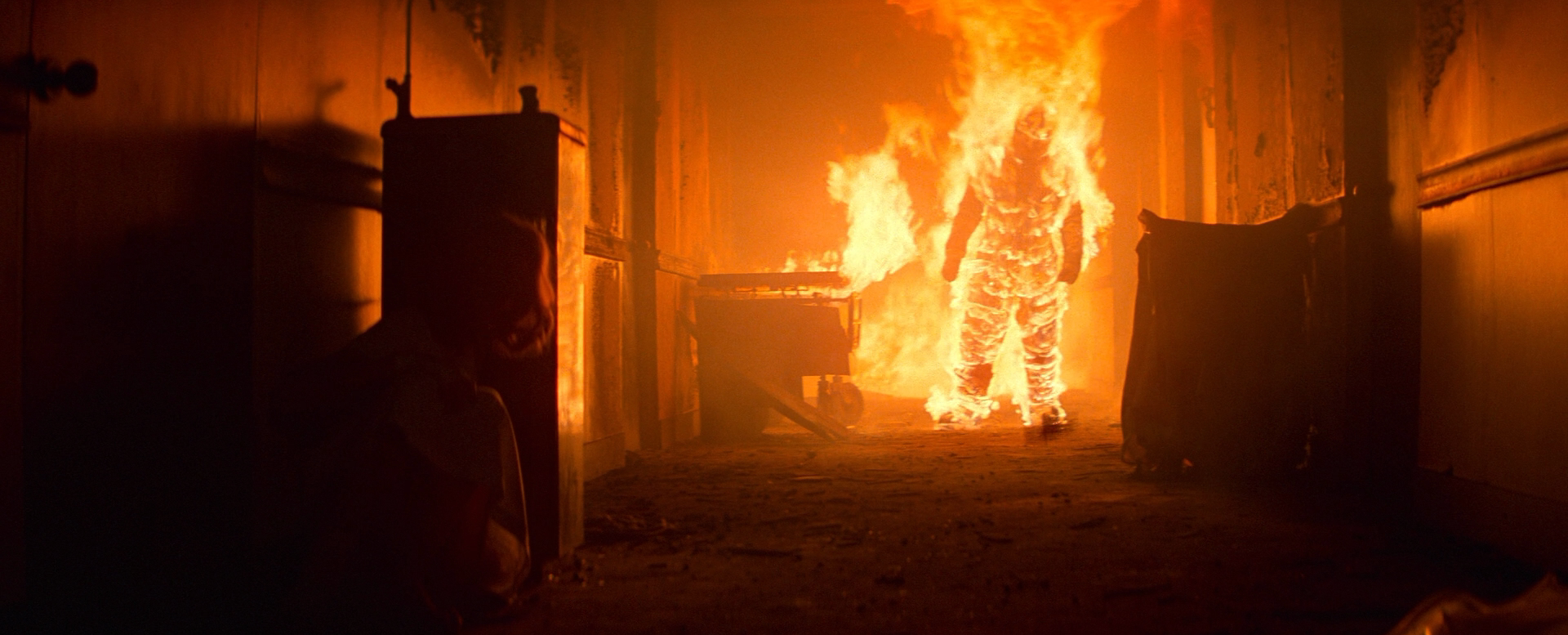

“You don’t know what death is.”
As its inane tagline suggests (“More Of The Night He Came Home.”), Halloween II picks up where Halloween left off, quickly recapping the original’s final sequence before furthering the exploits of the preternatural Michael Myers. Dr. Loomis (Donald Pleasence), more obsessed than ever, desperately tries to rally support from local law enforcement as he strives to bring Michael’s murder spree to an end. However, his zealous pursuit quickly leads to the fiery death of a drunk teenager (Jack Verbois) who’d been wearing a costume vaguely resembling Michael’s outfit, at which point Sheriff Brackett (Charles Cyphers) learns of his daughter’s death and abandons the chase. And it’s a good thing that Brackett clears out, too, because his emotional torment briefly flashes a human angle, when Halloween II is well on its way to becoming a vulgar slasher.
Meanwhile, Laurie (Jamie Lee Curtis), who had suffered a nasty stab wound in the waning moments of the original, is taken to Haddonfield Memorial, where she is bandaged up and told to rest. It’s within the ludicrously empty halls of the hospital that the bulk of the film takes place. (We are asked to believe that the expansive hospital contains only a half dozen staff, a single adult patient, and a nursery full of newborn babies.) A flirty young paramedic (Lance Guest) hangs around Laurie’s room while another one (Leo Rossi) convinces a nurse (Pamela Susan Shoop) to meet him in the therapy wing for some on-the-clock lovemaking. Leaving a trail of bodies in his wake, Michael (Dick Warlock1) gradually makes his way to the hospital, where he dispatches the security guard (Cliff Emmich), the doctor (Ford Rainey), the paramedics, and the nurses (Ana Alicia, Tawny Moyer, Gloria Gifford) in increasingly grisly fashion, culminating in a climactic confrontation with Laurie and Loomis in the bowels of the medical building.

In the wake of Halloween, the market for slasher films exploded. However, unlike the bloodless intensity generated by Carpenter’s tour de force, most of its imitators tended toward prosaic gore. They make the viewer squirm with disgust rather than fear. For better or worse, Halloween II takes its cues from the imitators, ramping up the body count and relishing the bloodletting. Michael takes inspiration from Mr. Voorhees, using a variety of instruments to claim his victims—knife, claw hammer, scalding water, syringe, scalpel, electrical wire. Most of their deaths feature more blood than the entirety of the original. Heck, even consider the young trick-or-treater whose mother brings him into the ER in a throwaway moment early in the film. Dressed in his little kid’s pirate costume, the boy’s mouth is dripping blood, a razor blade lodged in his gums from a candy he’d bitten into that some sadistic suburban homeowner had rigged with a nasty surprise. The gore contained in that single image rivals anything in Halloween and it has nothing to do with Michael Myers.
For gorehounds, then, Halloween II provides the requisite goods. It checks all of the boxes of a good slasher on paper. But for fans of the carefully crafted manipulations of Halloween, the sequel is much less satisfying. While its deviations are myriad, two in particular stand out to me as particularly detrimental. First is the lack of control of the frame. In the original, Carpenter and Dean Cunley gradually tighten the space around the characters until the climax finds Laurie fending off her attacker from inside of a closet. They also employ a subjective frame to torment the viewer with Michael’s looming presence. While Cunley returns and puts in stellar work, Carpenter’s philosophy is nowhere to be found. In the hands of journeyman director Rick Rosenthal, Michael is frequently employed for jump scares and point-of-view shots are used willy nilly. Take one look at the opening shots, which attempt to replicate the uncanniness of Carpenter’s climax, and you’ll see what I mean: there’s a palpable difference in quality, even if it is difficult to articulate the distinction. (Likewise, Carpenter’s score has been slightly modified, made a little more disco-ish and thus slightly less tantalizing.) Even so, there are a few genuinely great shots here, though most of them are less-than remixes of classics from the original.

But the lack of control by Rosenthal is much less of a problem than the screenplay, which undermines one of the original’s most crucial elements: the unknowability of Michael Myers. The fact that we could discern no obvious motive for his killings, that he seemed to fix upon Laurie by chance and pursue her instinctively, made his pursuit of her all the more terrifying. In Halloween II, Carpenter and Debra Hill’s screenplay posits that Laurie is Michael’s sister, born and given up for adoption after Michael was sent to the sanitarium. This development undercuts the horror of the existing dynamic by lamely grounding the antagonist and giving him some kind of rationale. Moreover, Loomis finds the word “Samhain” written in blood on a chalkboard in the elementary school (I’m not sure we ever learn why Michael might have gone there) and wildly posits that Michael is some kind of antichrist figure who is following an ancient sacrificial ritual. In light of these revelations, we end up not caring one wit for anyone besides Laurie, which is not helped by the fact that none of the other supporting characters (save Loomis, who spouts purple prose like he’s getting paid by the word) are drawn with any depth. Indeed, the tedious banter of the hospital staff often slows the film to a crawl, as the vacuous script introduces new characters as quickly as Michael can slaughter them, and oddly rushes many of its kills. The original wasn’t exactly a shining example of deep characterizations, but you certainly knew the difference between Annie and Lynda. Here the parade of characters is too rapid to connect. And because we don’t care about any of them, we don’t care when Michael hunts them down and kills them. We are not held in suspense because we fear for their wellbeing, we are simply waiting in anticipation to see what gruesome method will be used to butcher them. That’s what is on offer here, in lieu of suspense: macabre spectacle. There’s fun to be had if you meet it on its own terms, as a cross between a Halloween-redux and a bloody slasher, but it pales when set against its predecessor.
1. It’s no knock on Warlock, just a general observation, but it is amazing how much more sinister Nick Castle’s portrayal is in the original. They’re both just moving around without speaking, but something in the gait, in the speed of movement, makes Castle’s turn as the character more terrifying.